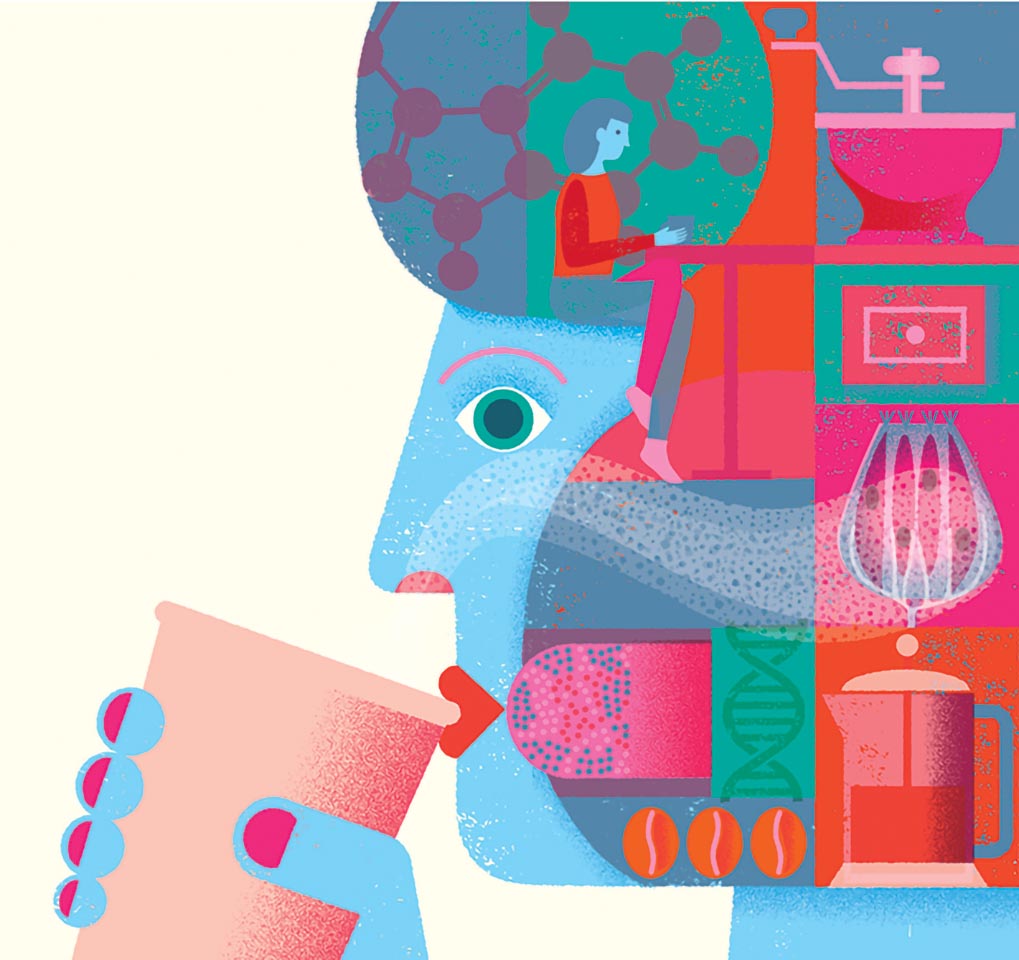
What we perceive when we taste something is a complex interaction of our physiology and our past experiences.
Our taste buds have receptors that detect the five classical taste modalities: salty, sour, sweet, umami, and bitter. Sweet, umami, and bitter are detected by receptors built from a closely related family of proteins. While there appears to be only one specific receptor to detect sweet and one to detect umami (both of which generally give us a positive taste sensation), the human genome has instructions for building more than 30 receptor proteins for detecting distinct bitter compounds. Notably, different people can have different polymorphisms (changes) in these bitter receptors, which can impact which bitter compounds a person can detect and how strongly they will taste them. For example, some of the compounds found in broccoli, kale, and similar vegetables are sensed by one particular receptor, TAS2R38. The gene that encodes the instructions for that receptor has sequence variation in the human population, making some of us less sensitive to those compounds. This affects how much people want to eat their broccoli: which specific version a person inherits has some effect on their dietary intake of vegetables.
Our sense of smell also plays an important role in our taste experience, as anyone who has ever had a stuffed nose can attest. Our olfactory receptors are structurally similar to the bitter, sweet, and umami receptors in our tongue. However, there are instructions for approximately 400 olfactory receptors encoded in our genome (making it the largest family of proteins in our DNA). As with the bitter receptors, there are many polymorphisms to these genes across the human population, and some of these have been connected to specific taste preferences. For example, whether you think cilantro is a delicious ingredient or a horrible plant that tastes like soap seems to be based on a sequence difference in an olfactory receptor encoded on chromosome 11.
Even considering just our physiology, it’s important to note that we typically are not tasting anything based on a single receptor in our mouth or nose. Rather, what we call the “taste” of what we eat or drink depends on the collective work of taste and olfactory receptors, as well as temperature receptors, mechanoreceptors (which sense the texture of the food), pain receptors (which sense many of the spicy compounds in our food), and other sensory receptors (tracking, for example, texture or fizziness) in our mouths. While pure chocolate is quite bitter, adding a little sugar, fat, and a dash of cinnamon and chili pepper makes a rich and spicy treat that activates dozens of different receptors. Bitter substances, alone or in combination with other ingredients, tend to produce taste experiences with a negative valence. But repeated exposure in the right context — such as a culture that values chocolate as a birthday treat or pitches coffee as a grown-up drink — can help create an overall positive experience when we consume those bitter things.
That’s because, once we expand our inquiry beyond oral and nasal physiology, we find even more variables that affect taste experience. For example, your past experiences and current interests can affect what you pay attention to, and that can affect your sensory experiences (exactly how this happens is a matter of dispute). Formal or informal training — as part of a wine appreciation course or learning from a parent how to cook a favorite dish — can enhance our ability to attend selectively to different components of what we eat or drink.
Outside a lab, we are never tasting single chemicals one by one. When we drink whiskey or eat chicken biryani, we are ingesting a myriad of types of molecules at once. We may have some control over which part of that stimulating symphony we focus upon, and that may affect not only how much we like the taste of what we are drinking or eating, but also what that taste, for us, actually is. So sometimes a kid just can’t like broccoli; but maybe, sometimes, they won’t.
— Jason Meyers, associate professor of biology and neuroscience, and Maura Tumulty, professor of philosophy, are co-teaching Our Sensational Mind: The Physiology and Philosophy of Perception in the spring.
